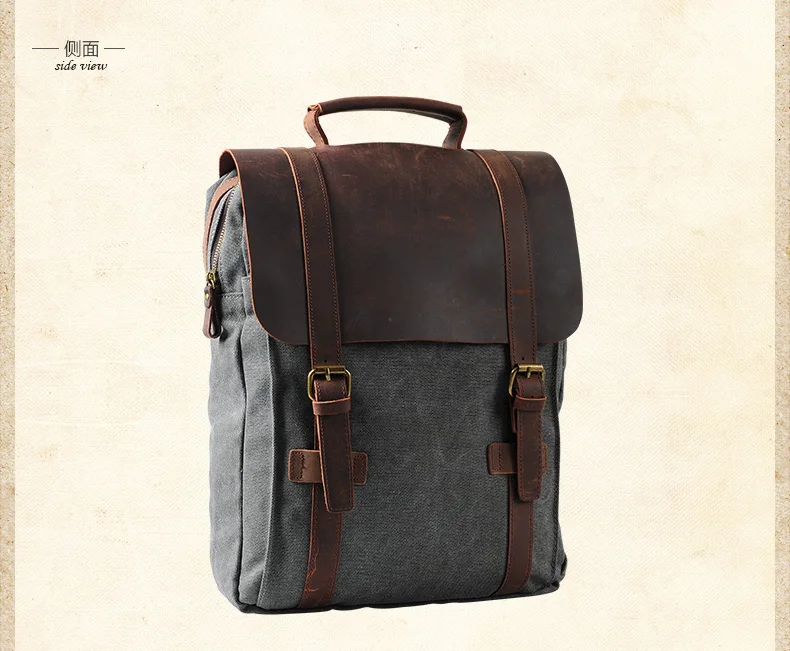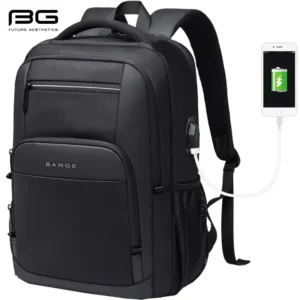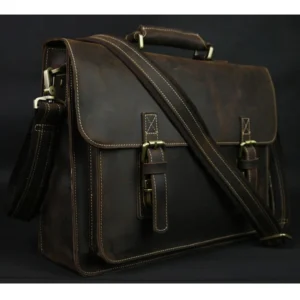Introduction
Choosing the right bag material is a crucial decision that impacts your entire academic experience. As a student, your bag is more than just a fashion accessory—it’s a daily companion that carries your educational essentials through years of classes, study sessions, and campus activities.
When it comes to student bags, two materials consistently stand at the forefront: leather and canvas. Each offers distinct advantages in durability, comfort, aesthetic appeal, and functionality that can significantly affect your day-to-day campus life.
The difference between these materials extends beyond mere appearance. Your choice will determine how your bag ages over time, how it protects your valuable electronics and textbooks, and even how it complements your evolving style from freshman year to graduation and beyond.
Throughout this guide, we’ll examine how both fashionable leather backpacks for students and canvas alternatives perform under the demanding conditions of academic life. The right bag becomes a trusted ally in your educational journey, adapting to your changing needs while providing reliable service through late-night study sessions, internships, and everything that comes with the perfect leather backpack for campus life.
Understanding Leather and Canvas: Material Foundations
Before comparing these materials for student life specifically, it’s essential to understand what they are and how they’re made.
Leather Basics
Leather is animal hide that undergoes tanning—a chemical process that preserves the material and creates a durable, flexible product. Not all leather is created equal, and understanding these differences is crucial when considering leather types for durable bags:
- Full-grain leather: The highest quality, featuring the entire grain layer with all natural markings. Typically 6-10 oz in thickness, it’s extremely durable and develops a beautiful patina over time.
- Top-grain leather: The second-highest quality, with the outermost layer sanded to remove imperfections. It’s thinner and more workable but still durable.
- Genuine leather: A lower grade made from layers of leftover hide bonded together. Despite the name, it’s actually one of the lower quality grades of leather.
Premium full-grain leather backpacks represent the gold standard for those seeking long-lasting quality, though they come at a higher initial cost.
Canvas Explained
Canvas is a plain-woven fabric typically made from cotton, hemp, or linen fibers. The material comes in several varieties:
- Plain canvas: The standard version, typically ranging from 10-24 oz in weight.
- Duck canvas: A dense, heavy-duty variety often used for more demanding applications.
- Waxed canvas: Canvas treated with wax to increase water resistance and durability.
Historically, canvas gained popularity for its utilitarian applications, including military equipment, sails, and tents—all situations demanding strength and durability.
Durability Battle: Which Material Stands the Test of Student Life?
Student life is notoriously demanding on bags. From overloading with textbooks to tossing under desks and tables, your bag needs to withstand significant daily stress.
Leather Longevity
With proper care, a quality leather bag can last 10+ years, often surviving your entire academic journey and beyond. Durable leather bags for daily classes offer several advantages:
- Becomes stronger and more supple with age
- Develops a unique patina reflecting your personal journey
- Resistant to tearing and punctures
- High-stress points like handles and bottoms maintain integrity longer
- Can be professionally restored if damaged
The key characteristic of leather is that it doesn’t simply wear out—it evolves. Scratches and marks become part of its character rather than signs of deterioration.
Canvas Durability
Canvas bags typically last 3-7 years depending on quality and care. Their durability profile includes:
- Initial strength and resistance to abrasion
- Tendency to fade, fray, or thin out at stress points over time
- More vulnerable to tearing after prolonged use
- Washability allows for removal of stains that would be permanent on leather
- Often reinforced with extra stitching at high-stress areas
The maintenance factor plays a crucial role in longevity for both materials, with leather requiring more specialized care but potentially lasting significantly longer.
Investment Perspective: Cost Analysis for Student Budgets
When evaluating cost, students must consider both initial investment and long-term value.
Price Range Comparison
| Quality Level | Leather Bags | Canvas Bags |
|---|---|---|
| Entry-Level | $80-150 | $30-70 |
| Mid-Range | $150-300 | $70-120 |
| Premium | $300+ | $120-200 |
While leather backpacks typically demand a higher upfront investment, calculating cost-per-year often reveals a different picture. A $250 leather bag lasting 10 years costs $25 annually, while a $70 canvas bag lasting 4 years costs $17.50 annually—not dramatically different when spread over time.
Value Considerations Beyond Price
Leather bags often retain value better and can even appreciate as they develop character. Some additional financial considerations include:
- Potential resale value of well-maintained leather bags
- Repair costs vs. replacement costs
- Professional appearance benefits for internships and job interviews
- Protection value for expensive electronics
Students must weigh the “buy once, cry once” philosophy against more immediate budget constraints, particularly when financial resources are limited during college years.
Comfort and Weight Considerations for Daily Campus Carry
The physical experience of carrying your bag across campus day after day significantly impacts your comfort and energy levels.
Weight Comparison
Canvas generally offers a weight advantage. A typical 15” canvas backpack might weigh 1.5-2.5 pounds empty, while comparable leather laptop backpacks often weigh 3-4 pounds before adding contents. This difference becomes noticeable during long days traversing large campuses.
Comfort Factors Beyond Weight
- Conforming to body: Leather gradually molds to your body’s contours, potentially providing more personalized comfort over time.
- Strap design: Canvas straps can be wider and more padded without looking bulky, while leather straps gain suppleness with use.
- Weather impact: Leather can feel sticky against skin in hot weather, while canvas breathes better but may absorb sweat.
- Temperature variation: Canvas maintains consistent texture in varying temperatures, while leather can become stiffer in cold weather.
For students with longer commutes or extensive campus walking, these comfort considerations may outweigh other factors.
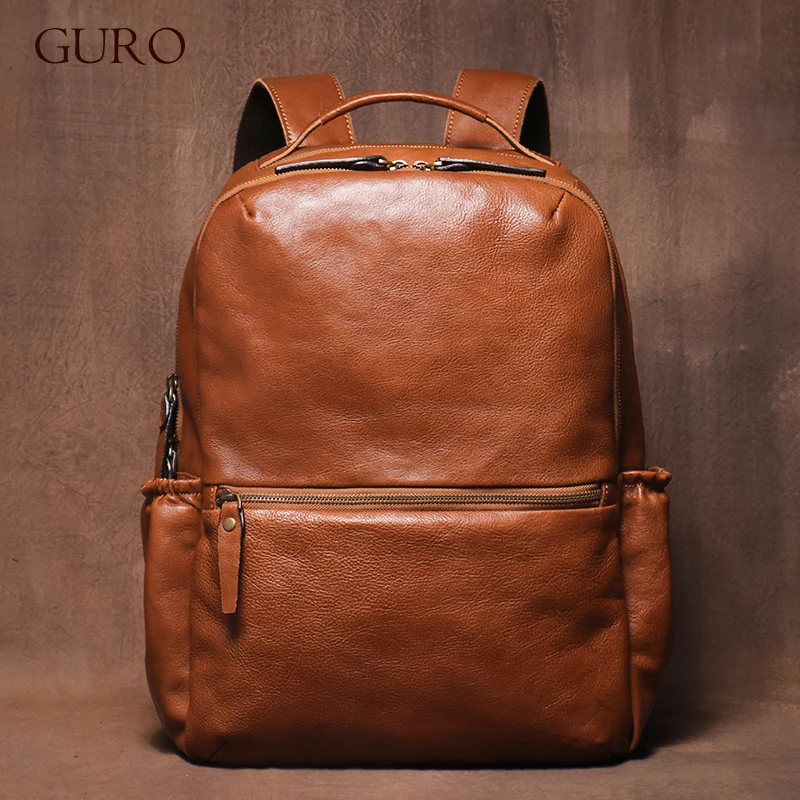
Daily Care and Maintenance Requirements
The time and effort required to maintain your bag can significantly impact your overall satisfaction.
Leather Care Requirements
- Regular application of leather conditioner (2-4 times yearly)
- Cleaning with appropriate leather cleaner as needed
- Waterproofing treatments for weather protection
- Storage in dust bags or breathable containers during breaks
- Keeping away from direct sunlight and heat sources
Quality leather care products for backpacks are essential investments that extend your bag’s life. Most maintenance sessions require 15-30 minutes every few months.
Canvas Care Procedures
- Machine washable (most non-waxed varieties)
- Spot cleaning for minor stains
- Re-waterproofing waxed canvas annually
- Air drying completely before storage
- Brush cleaning for dust and surface dirt
Canvas generally allows for easier quick cleaning of common student accidents like coffee spills. However, deep stains can be more stubborn on canvas than on treated leather, which often allows liquids to be wiped away before absorption.
Weather Warriors: Protection in Different Environments
Campus life exposes your bag to various weather conditions, from sudden rainstorms to snow and extreme temperatures.
Water Resistance
Untreated leather is naturally vulnerable to water damage, potentially staining or warping when wet. However, properly treated leather with appropriate waterproofing can offer impressive water resistance. The complete guide to waterproofing leather bags shows how regular application of protective products creates a hydrophobic barrier.
Standard canvas absorbs water readily, potentially soaking through to contents. Waxed canvas, however, offers excellent water resistance comparable to treated leather. Both materials require different approaches:
- Treated leather: Water beads on surface, can be wiped off
- Waxed canvas: Similar beading effect, but wax needs periodic reapplication
- Regular canvas: Absorbs moisture, requiring interior waterproof lining
Performance in Extreme Conditions
- Heavy rain: Waxed canvas and properly treated leather perform similarly well; untreated canvas performs poorly
- Snow: Both materials handle snow well when properly treated
- Extreme cold: Leather becomes stiffer; canvas maintains flexibility
- Extreme heat: Leather may darken or dry out; canvas typically unaffected
Students in particularly rainy regions might prefer waxed canvas or heavily treated leather, while those in variable climates might appreciate leather’s adaptability when properly maintained.
Protecting What Matters: Safeguarding Electronics and Books
For students, protecting valuable contents—particularly expensive electronics and irreplaceable notes—is a primary concern.
Structural Protection
Leather provides natural structural integrity that helps maintain shape even when not full, creating a protective shell around contents. The rigid backing found in many leather school bags with laptop compartments offers superior protection against bumps and minor drops.
Canvas bags typically require additional padding or internal structure to provide comparable protection. However, they often incorporate more padding by design precisely because the material itself offers less inherent structure.
Protection Capabilities
- Shock absorption: Leather’s natural thickness absorbs impact better than thin canvas
- Moisture barrier: Treated leather and waxed canvas both excel; untreated canvas provides minimal protection
- Crush resistance: Leather maintains shape under pressure; canvas conforms to pressure
- Organizational protection: Both materials can incorporate padded dividers and specialized compartments
For students carrying expensive laptops, tablets, or other electronics, protective capabilities should be a primary consideration in material selection.
Style and Aesthetics in Academic Settings
A student bag serves functional needs but also makes a personal statement about your style and professionalism.
Aesthetic Evolution
One of leather’s most appealing characteristics is how it develops a unique patina over time, becoming more visually interesting with age. The natural variations in color and texture that emerge tell the story of your academic journey, making each bag one-of-a-kind.
Canvas typically fades and shows wear more obviously, though some find this “broken-in” appearance equally appealing. The style of leather backpacks for school often transitions more seamlessly from casual to formal settings.
Setting Appropriateness
- Classroom settings: Both materials are equally appropriate
- Professional internships: Leather typically presents a more polished image
- Job interviews: Leather conveys greater professionalism
- Casual campus life: Canvas offers a more relaxed, youthful aesthetic
- Evening/social settings: Leather transitions better to non-academic environments
Customization Options
Canvas offers excellent options for expressing individuality through patches, pins, paintings, or embroidery. Leather can be embossed or burnished for a more subtle personalization approach but doesn’t accommodate the same range of artistic expression.
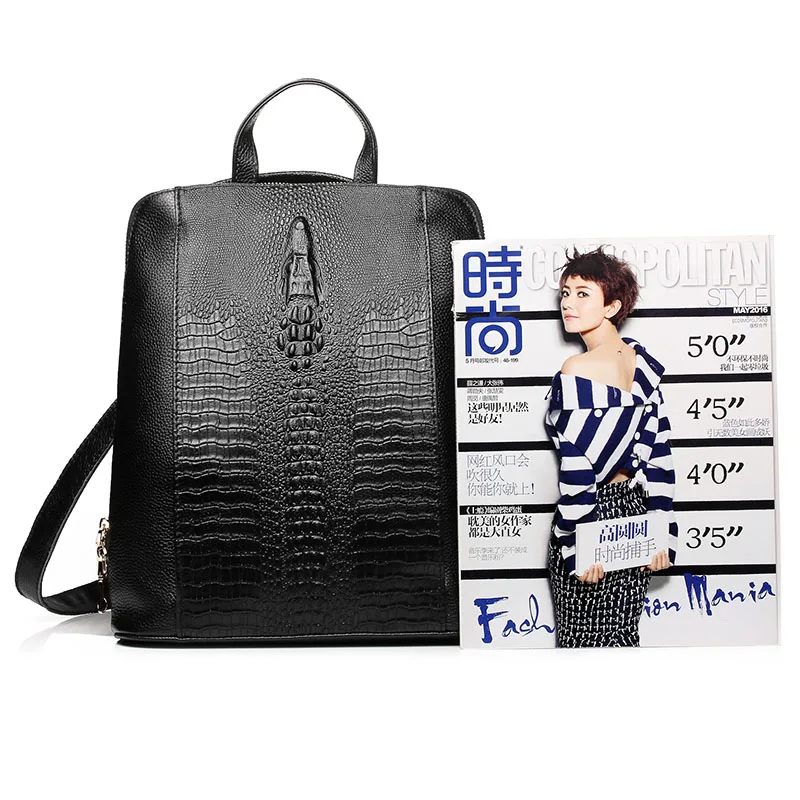
Environmental Considerations: Sustainability Profile
Today’s students increasingly factor environmental impact into purchasing decisions.
Production Impact
Leather production raises several environmental concerns:
- Water usage and chemical runoff from tanning processes
- Energy consumption in processing
- Animal welfare considerations
Canvas production has its own environmental footprint:
- Intensive water usage for cotton cultivation
- Pesticide use in non-organic cotton farming
- Energy requirements for manufacturing synthetic canvas
Sustainability Factors
- Longevity: Leather’s potential decade-plus lifespan represents fewer replacement products over time
- Biodegradability: Natural leather biodegrades; many canvas products contain synthetic materials that don’t
- Repair potential: Both materials can be repaired, extending usable life
- Ethical alternatives: Vegetable-tanned leather and organic cotton canvas offer reduced environmental impacts
For environmentally conscious students, researching specific production methods and choosing higher-quality products with longer lifespans often represents the most sustainable approach regardless of material.
14 Inch Leather Laptop Backpack, Brown Leather Backpack, Men's Leather Backpack, Vintage Leather Backpack
Price range: $177.28 through $199.12 Select options This product has multiple variants. The options may be chosen on the product pageCarry On Leather Backpack, Roll Top Leather Backpack
Price range: $77.76 through $96.48 Select options This product has multiple variants. The options may be chosen on the product pageDesigner Men's Backpack, Men's Leather Laptop Backpack, Men's Leather Work Backpack
Price range: $158.04 through $160.04 Select options This product has multiple variants. The options may be chosen on the product pageDesigner Mini Backpack, Mini Leather Backpack, Small Leather Sling Backpack, Women's Leather Backpack
Price range: $95.76 through $98.80 Select options This product has multiple variants. The options may be chosen on the product pageDesigner Mini Backpack, Designer Women's Backpack, Mini Leather Backpack, Women's Leather Backpack
Price range: $135.92 through $137.64 Select options This product has multiple variants. The options may be chosen on the product page15 Inch Leather Laptop Backpack, Leather Briefcase Backpack
$332.96 Select options This product has multiple variants. The options may be chosen on the product page
Making Your Decision: A Practical Framework
Choosing between leather and canvas ultimately depends on aligning material properties with your specific priorities and circumstances.
Decision Framework Based On:
Budget Reality
* Immediate budget constraints favor canvas
* Long-term investment perspective favors leather
* Consider when you’ll have more disposable income (now vs. post-graduation)Daily Carry Requirements
* Heavy loads with electronics? Leather offers better protection
* Lightweight needs with minimal electronics? Canvas reduces weight
* Variable needs? Consider organizational features over materialLocal Weather Patterns
* Rainy regions demand waxed canvas or well-treated leather
* Hot, humid climates might favor breathable canvas
* Variable weather requires adaptable protection strategiesProfessional Aspirations
* Career paths requiring professional appearances may justify leather’s investment
* Fields with outdoor work or creative focus might benefit from canvas durability and expression
* Consider transition from student to professional lifeMaintenance Willingness
* Limited time/interest in maintenance favors canvas
* Enjoyment of care routines and patina development favors leather
Regardless of material choice, prioritize quality construction features like reinforced stitching, quality hardware, and thoughtful organization that suits your specific needs.
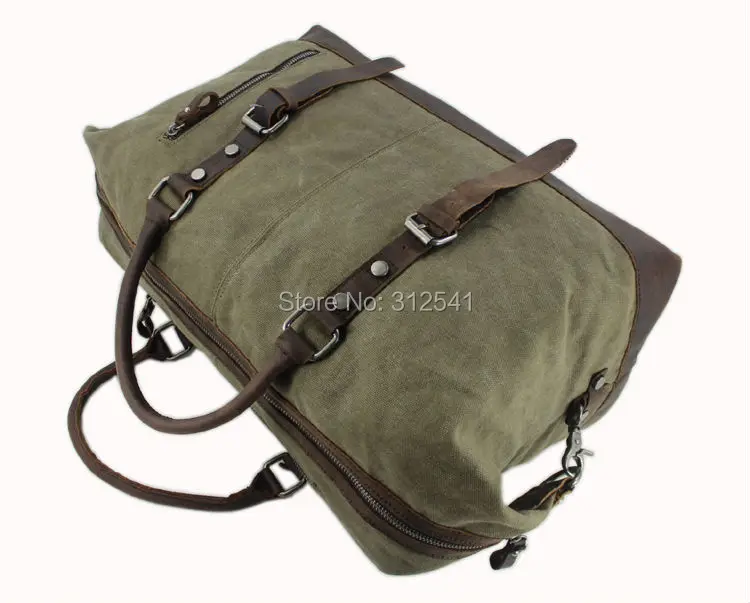
When Canvas Outshines Leather: Specific Student Scenarios
In certain student situations, canvas clearly offers advantages that make it the superior choice:
Art and design students handling paints, charcoal, or other messy supplies benefit from canvas bags that can be thoroughly washed when inevitable stains occur.
Outdoor education programs involving field research, environmental studies, or agriculture often expose bags to mud, plant material, and harsh conditions where canvas’s washability becomes essential.
Budget-constrained students who need immediate functionality without a significant upfront investment can access quality canvas options at lower price points.
Ethically motivated students avoiding animal products for personal beliefs will naturally gravitate toward canvas alternatives.
Highly active campus lifestyles involving sports, cycling, or constant movement might benefit from canvas’s lighter weight and casual aesthetic that better accommodates an on-the-go lifestyle.
When Leather Prevails: Student Situations Favoring Leather
Conversely, certain student circumstances make leather the clearly superior option:
Business, law, or professional program students frequently attending networking events, presentations, or interviews benefit from leather’s polished appearance and professional impression.
Technology-focused students carrying valuable electronics appreciate leather’s superior structural protection and moisture resistance when properly treated.
Long-term planners looking beyond graduation to professional life find leather transitions seamlessly from campus to workplace, potentially serving through graduate school and early career stages.
Students in variable climates benefit from leather’s adaptability when properly treated, handling everything from snow to rain to dry conditions with appropriate care.
Fashion-conscious individuals pursuing a timeless aesthetic appreciate how stylish leather backpacks for college develop character and uniqueness over time instead of simply wearing out.
Best of Both Worlds: Hybrid Options Worth Considering
For students struggling to decide between materials, hybrid bags offer compelling alternatives that combine advantages of both leather and canvas:
Canvas bodies with leather bases provide durability where bags contact the ground while maintaining lighter overall weight. Strategic leather reinforcement at stress points (corners, handles, straps) extends canvas bag lifespan significantly while adding sophisticated design elements.
These hybrids typically price between pure canvas and all-leather options, offering a middle-ground for budget considerations. When evaluating hybrids, examine where each material is used and whether it maximizes the strength of each—leather for structure and wear points, canvas for weight reduction and flexibility.
Maintenance for hybrid bags requires understanding both material care requirements, though typically at a reduced level compared to full leather options. The growing popularity of these designs has led to innovative approaches for organizing textbooks in leather backpacks while maintaining comfortable weight distribution.
FAQs: Common Questions About Leather vs Canvas Student Bags
Can leather bags become truly waterproof with proper treatment?
While leather can become highly water-resistant with appropriate products, “waterproof” is a strong claim. Quality leather with regular waterproofing treatment will repel water during typical rain exposure, but prolonged submersion would eventually allow moisture penetration. For most student needs, properly treated leather provides sufficient water protection.
How long does canvas typically last before needing replacement?
Quality canvas bags typically last 3-7 years with regular student use. Heavy-duty or waxed canvas versions tend toward the longer end of this spectrum, while lightweight canvas may wear out faster, especially at stress points like corners and strap attachments.
Is genuine leather a good budget alternative to full-grain?
Despite the name suggesting quality, “genuine leather” is actually a lower grade material made from leftover hide pieces bonded together. While less expensive, it doesn’t develop the same patina and typically lasts 2-5 years rather than the 10+ years of full-grain. For students seeking leather’s benefits on a budget, top-grain offers a better compromise.
Can canvas bags look professional enough for internships?
High-quality canvas bags in solid, neutral colors (particularly black, navy, or olive) can appear sufficiently professional for most internship settings. Waxed canvas particularly offers a more sophisticated finish. However, for conservative professional environments like finance, law, or consulting, leather still conveys a more established professional image.
Which material is better for students with back problems?
Canvas’s lighter weight generally makes it preferable for students with back issues. However, more important than material is the bag’s design—look for wide, padded straps, proper weight distribution, and ergonomic back padding. Some leather bags incorporate excellent ergonomic design that offsets their additional weight.
